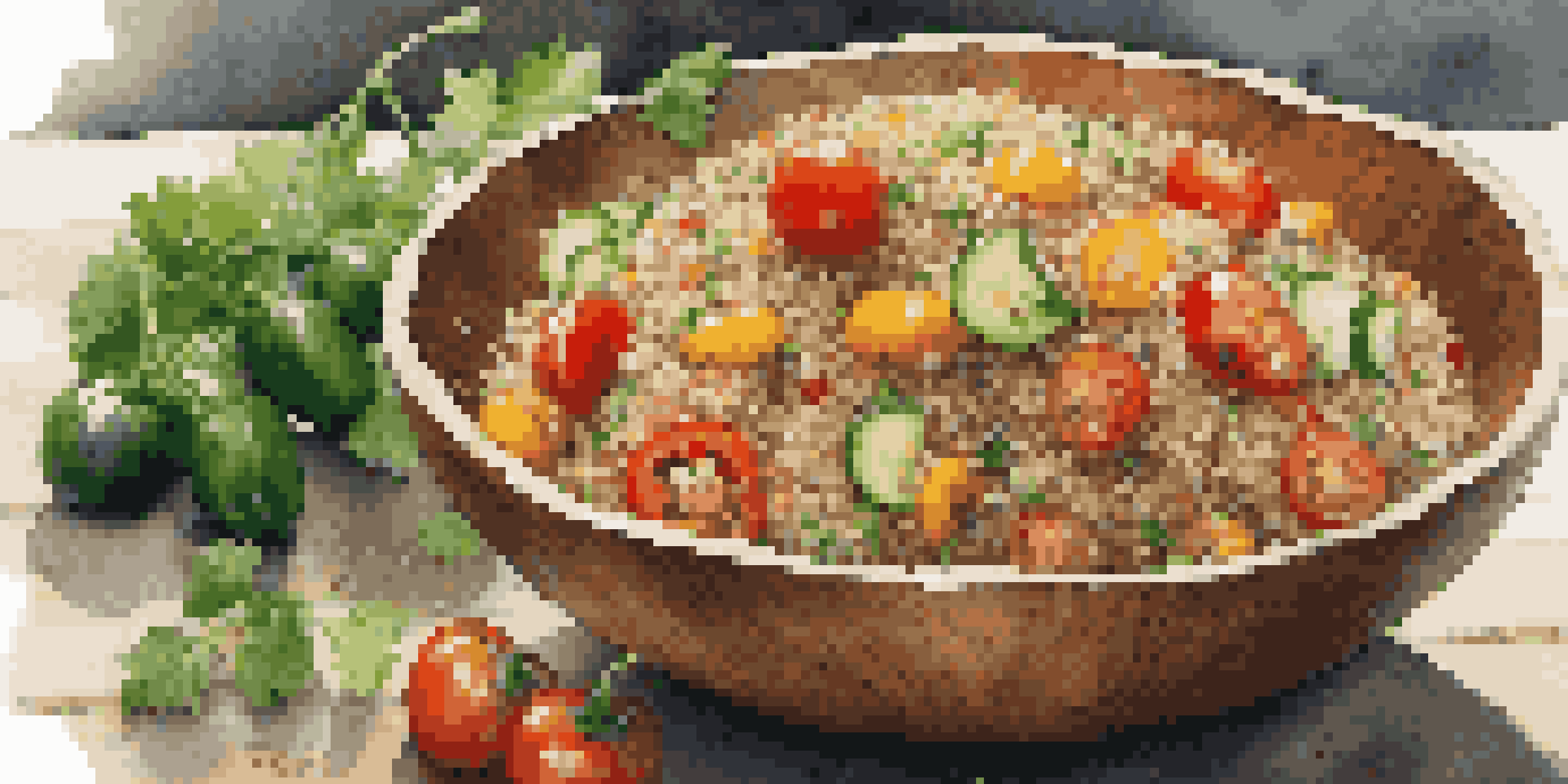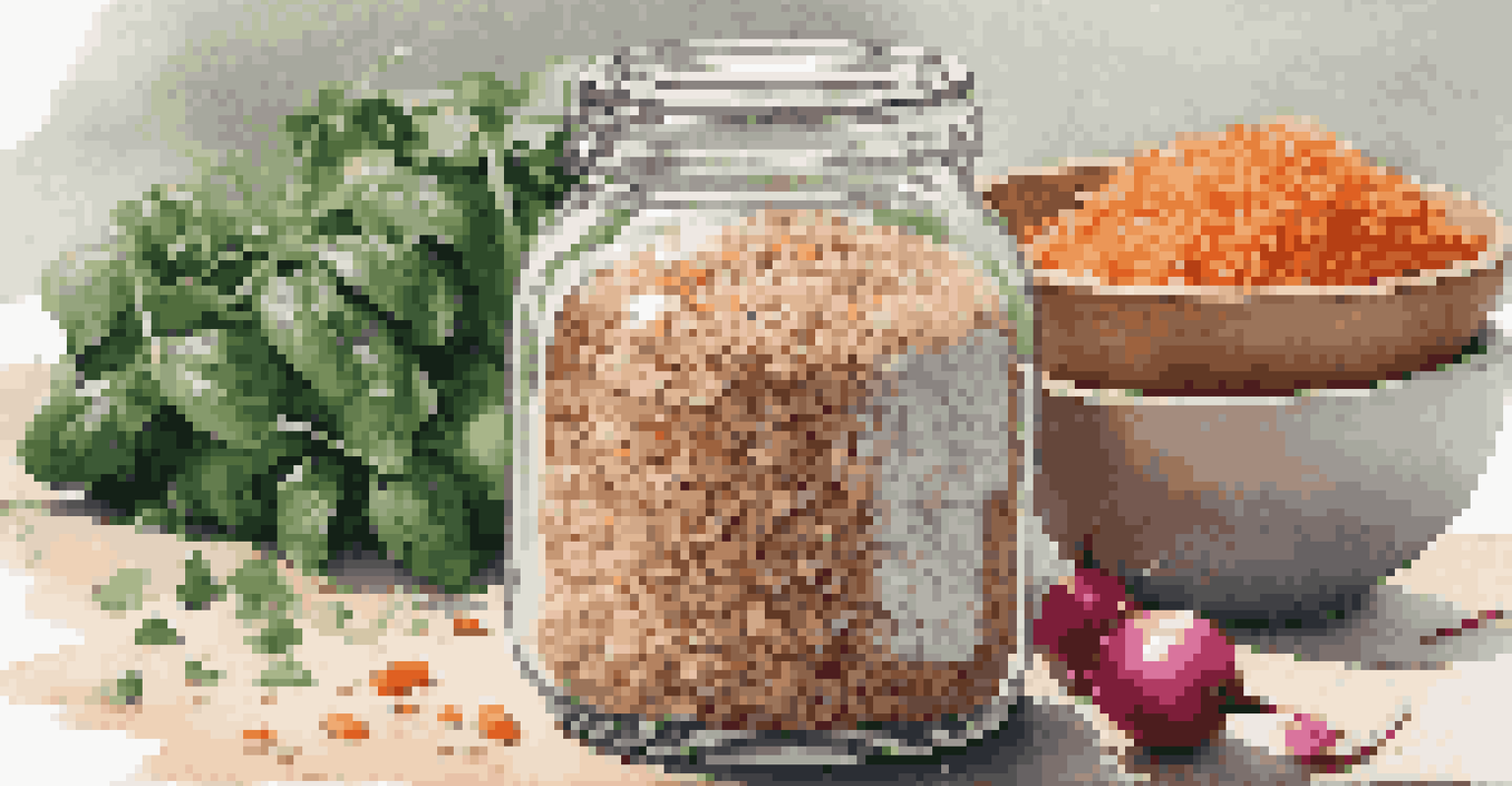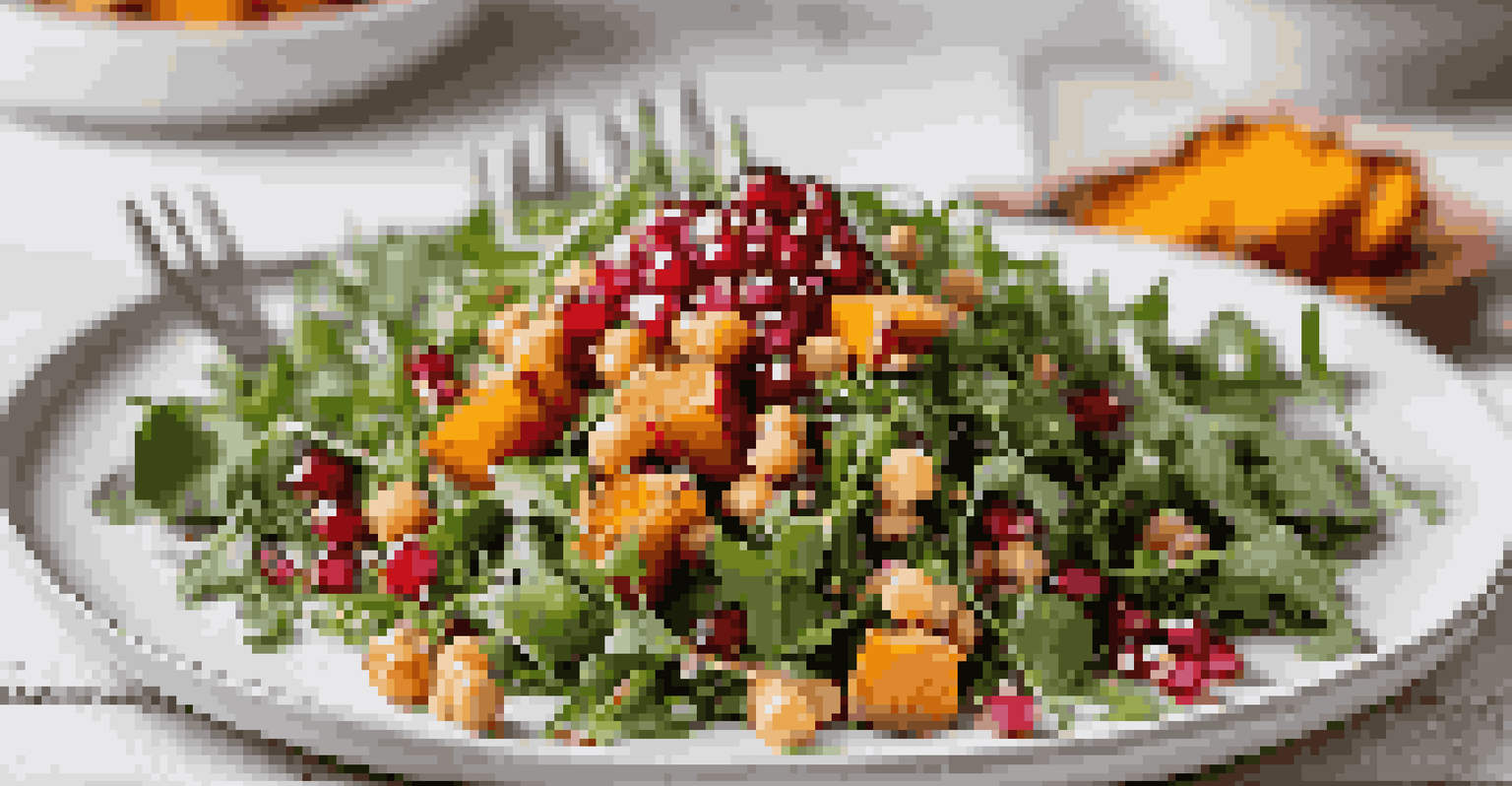Healthy Cooking Techniques for Flavorful Grain Salads

Understanding the Basics of Grain Salads
Grain salads are a delightful way to incorporate healthy ingredients into your meals. They typically consist of a base of whole grains like quinoa, farro, or brown rice, combined with various vegetables, herbs, and dressings. Not only are they nutritious, but they also offer a versatile canvas for flavor experimentation.
Let food be thy medicine and medicine be thy food.
When preparing a grain salad, it’s crucial to select high-quality grains as your foundation. Whole grains are packed with fiber, vitamins, and minerals, making them a healthier choice compared to refined grains. By understanding the different types of grains, you can create diverse textures and flavors in your salads.
In essence, grain salads are not just side dishes; they can be hearty mains too. You can customize them to fit any dietary preference, whether vegetarian, vegan, or omnivorous. This adaptability makes grain salads a staple for anyone looking to eat healthier without sacrificing taste.
Choosing the Right Grains for Your Salad
The choice of grain can significantly affect the flavor and texture of your salad. Quinoa, for instance, has a slightly nutty taste and a fluffy texture, while farro offers a chewiness that adds depth. Brown rice is another excellent option for those looking for a more neutral flavor that easily absorbs dressings.

Experimenting with different grains can lead to exciting flavor combinations. You might find that mixing grains like barley and millet can create a unique base for your salad, enhancing both taste and nutritional value. Plus, using a variety of grains can make your dish visually appealing.
Grain Salads Are Nutritious Meals
Grain salads combine whole grains, vegetables, and proteins to create versatile and healthy meals.
Don't hesitate to try lesser-known grains like freekeh or teff. These options not only add new flavors but also introduce different nutritional benefits. The key is to choose grains that complement the other ingredients you plan to use.
Cooking Grains to Perfection
Cooking grains properly is essential for achieving the best texture in your salads. Start by rinsing your grains to remove any bitterness and ensure a clean taste. Follow the recommended cooking times and water ratios to avoid mushy results, as each grain has its unique requirements.
Eating well is a form of self-respect.
For added flavor, consider cooking grains in broth instead of water. This simple switch can infuse your grains with a savory depth that enhances the overall taste of your salad. Herbs and spices can also be added while cooking for an extra layer of flavor.
Once cooked, allow the grains to cool before adding them to your salad. This prevents wilting of fresh ingredients and maintains a pleasant texture. Remember, patience is key in achieving that perfect bite!
Incorporating Fresh Vegetables and Herbs
Adding fresh vegetables and herbs is a game-changer when it comes to grain salads. They not only provide vibrant colors but also introduce crunch and freshness. Think bell peppers, cucumbers, and cherry tomatoes, which can brighten up your dish both visually and in flavor.
Herbs like parsley, cilantro, and basil can elevate your salad from good to great. They add aromatic qualities and enhance the overall flavor profile without extra calories. Experimenting with different herbs can lead to delightful surprises.
Choosing Grains Impacts Flavor
The selection of grains like quinoa or farro greatly influences the texture and taste of your salad.
Don’t shy away from seasonal vegetables, either. Incorporating what's fresh and in season can lead to more flavorful results while supporting local farmers. The right mix can transform a simple grain salad into a culinary masterpiece.
Mastering Flavorful Dressings for Grain Salads
The dressing is a crucial component that can make or break your grain salad. A well-balanced dressing enhances the natural flavors of your ingredients and ties everything together. Classic vinaigrettes made with olive oil, vinegar, and a touch of mustard can add a zesty kick.
Consider experimenting with different flavors by adding elements like citrus juice, honey, or tahini. Each ingredient can bring out unique flavors and textures, making your dressing more than just a topping. A creamy avocado dressing, for example, can add richness while still being healthy.
Don’t forget to taste as you go! Adjusting the seasoning and flavors can make a significant difference in how your salad turns out. A pinch of salt or a squeeze of lemon juice at the end can elevate your dish beautifully.
Adding Protein for a Balanced Meal
To make your grain salad a complete meal, consider adding a source of protein. Options like chickpeas, black beans, or lentils not only enhance the texture but also contribute additional nutrients. You can also include grilled chicken, shrimp, or tofu for a more substantial dish.
Protein helps keep you fuller for longer, making it an essential component of a balanced diet. By integrating these ingredients, you create a satisfying meal that is both nutritious and delicious. Plus, they can add interesting flavors and textures to your salad.
Dressings Enhance Overall Taste
A well-balanced dressing is essential to elevate the natural flavors of your grain salad.
Don’t be afraid to mix and match proteins based on your preferences. Each choice can introduce new flavors and complement your grain and vegetable selections beautifully.
Storing and Serving Your Grain Salads
Proper storage is essential to maintaining the freshness of your grain salads. Keep them in an airtight container in the refrigerator, and they should last 3-5 days. This makes them perfect for meal prep, allowing you to enjoy healthy lunches throughout the week.
When serving, let your salad sit at room temperature for a bit, as this can enhance the flavors. Cold salads can sometimes mask the taste, so allowing them to warm slightly can bring out all those delicious notes. It's a small step that can make a big difference.

Finally, feel free to get creative with your presentation! Layering the ingredients in a jar for a visually appealing look can be as satisfying as it is tasty. A beautiful presentation can make the meal feel even more special.